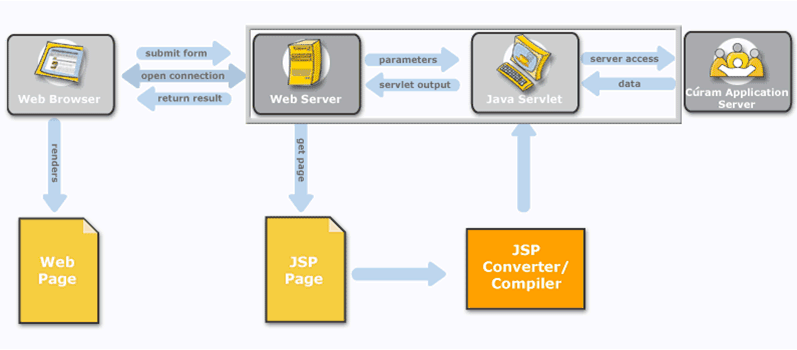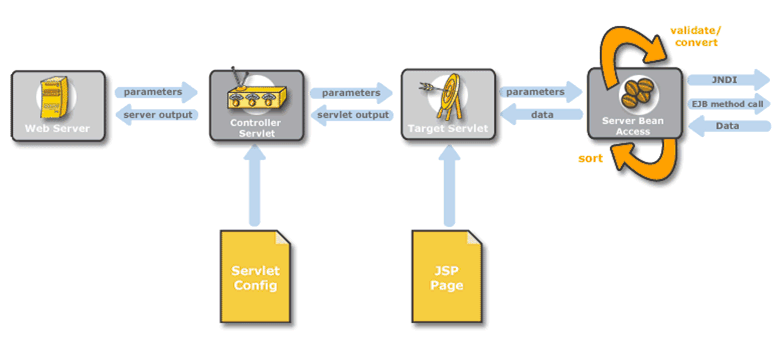At runtime, the client user interface is generated by Java™ Server Pages (JSPs) compiled as servlets. These servlets run in a web container that sits between the browser client and the back-end IBM Cúram Social Program Management™ application server.
The Browser Client, which is a standard internet browser (e.g. Microsoft® Internet Explorer ™ ), displays the HTML pages to the user. Events generated by user interaction result in a HTTP request being sent to the web server. This is a standard web server such as IBM® HTTP Server ™ or Apache Web Server™ . Here, a JSP generated by the Cúram environment is converted into a Java™ Servlet which accepts the relevant parameters from the web server and calls the application server.
The IBM Cúram Social Program Management™ application server uses generated Server Access Beans to call appropriate server business logic, in addition to providing data conversion logic. It passes back the result and the servlet that handles this result generates the new HTML page and passes it back to the web browser via the web server.

The following more detailed view of the Web tier shows that client requests are intercepted by a controller servlet, which dispatches to the appropriate JSP servlet. Server Access Beans perform the job of converting data from HTML forms to an appropriate representation for transmission to the back-end application server. This stage of processing also includes data validations which have been previously defined in the application model. Results from the application server are formatted for display, and "list data" may optionally be sorted in a user-defined order.
